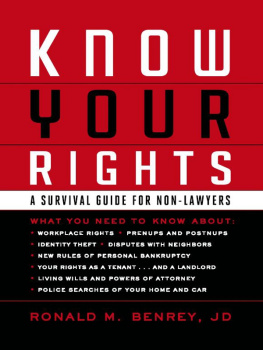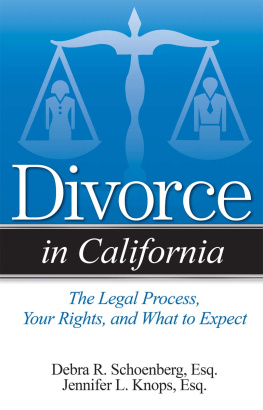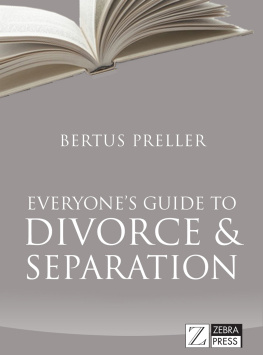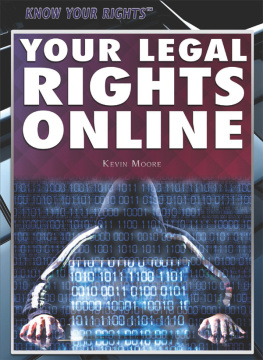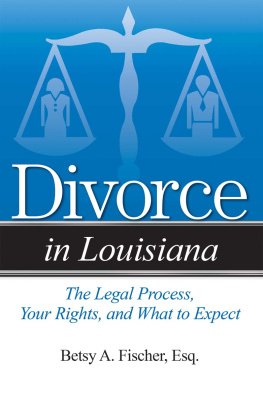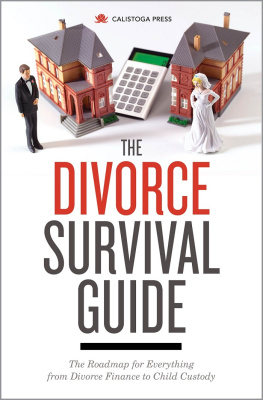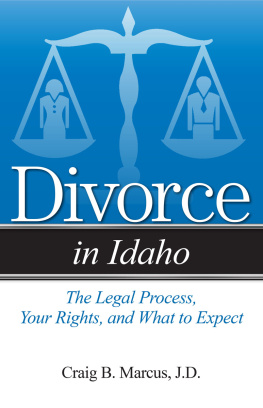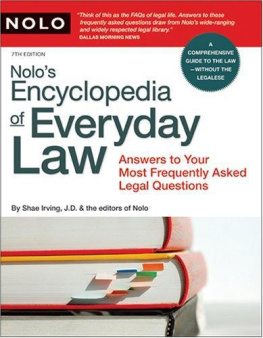
KNOW
________________
YOUR
________________
RIGHTS
________________
A SURVIVAL GUIDE FOR NON-LAWYERS
RONALD M. BENREY, JD

STERLING and the distinctive Sterling logo are registered trademarks
of Sterling Publishing Co., Inc.
Library of Congress Cataloging-in-Publication Data
Benrey, Ron, 1941
Know your rights : a survival guide for non-lawyers / Ronald M. Benrey.
p. cm.
Includes index.
ISBN 978-1-4027-6391-5
1. Law--United States--Popular works. I. Title.
KF387.B39 2011
349.73--dc22
2010024253
2 4 6 8 10 9 7 5 3 1
Published by Sterling Publishing Co., Inc.
387 Park Avenue South, New York, NY 10016
2011 by Ronald M. Benrey
Distributed in Canada by Sterling Publishing
c/o Canadian Manda Group, 165 Dufferin Street
Toronto, Ontario, Canada M6K 3H6
Distributed in the United Kingdom by GMC Distribution Services
Castle Place, 166 High Street, Lewes, East Sussex, England BN7 1XU
Distributed in Australia by Capricorn Link (Australia) Pty. Ltd.
P.O. Box 704, Windsor, NSW 2756, Australia
Manufactured in the United States of America
All rights reserved
Sterling ISBN 978-1-4027-6391-5
This book is designed to help readers understand commonly encountered legal principles. It is not intended as a substitute for legal adviceor authoritative legal informationprovided by a licensed professional. This book is sold with the understanding that neither the author nor the publisher is engaged in rendering legal, accounting, or other professional services. If legal advice or other expert assistance is required, the services of a competent professional person should be sought. [From a Declaration of Principles jointly adopted by a Committee of the American Bar Association and a Committee of Publishers.]
DEDICATION
This book is for Janet, for too many reasons to mention.
CONTENTS
CHAPTER 1
KNOW YOUR RIGHTS UNDER THE LAW
CHAPTER 2
THE LAW OF CONTRACTS
CHAPTER 3
INTENTIONAL LEGAL WRONGS
CHAPTER 4
NEGLIGENCE AND ACCIDENTS
CHAPTER 5
MARRIAGE AND PRENUPTIAL AGREEMENTS
CHAPTER 6
SEPARATION AND DIVORCE
CHAPTER 7
ADOPTION, CHILD CUSTODY, AND CHILD SUPPORT
CHAPTER 8
RENTING A HOME
CHAPTER 9
BUYING (OR SELLING) A HOUSE
CHAPTER 10
NEIGHBORHOOD DISPUTES
CHAPTER 11
PERSONAL PROPERTY AND GIFTS
CHAPTER 12
The Products You Buy
CHAPTER 13
BUYING A CAR
CHAPTER 14
TRIALS IN SMALL CLAIMS COURT
CHAPTER 15
YOUR CONSTITUTIONAL RIGHTS AND FREEDOMS
CHAPTER 16
EVERYDAY LAW ON THE JOB
CHAPTER 17
CRIMINAL LAW AND PROCEDURE
CHAPTER 18
HEALTH-CARE LAW
CHAPTER 19
LEGAL ISSUES AT THE END OF LIFE
CHAPTER 20
PERSONAL BANKRUPTCY
CHAPTER 21
EVERYDAY IMMIGRATION LAW
A venerable legal maxim teaches that the well-trodden path is the safest. Thats why so many contracts, wills, and familiar legal documents seem so similar. Many publishers choose the safe route for the legal guides they offer. I thank Meredith Hale, who launched this project, and her management colleagues at Sterling Publishing, for having the determination to avoid the trodden path. They gave me the freedom to write the book Ive dreamed of writing since I graduated from law school.
Another oft-heard legal adage affirms that no one can properly understand any part of a thing till (s)he has read through the whole again and again. I know this was the case for Kate Zimmerman, my editor, and Scott Amerman, my production editor. Their willingness to read and reread my manuscript made the editorial process painless for me.
Yet another maxim instructs: He who does a thing by an agent is considered as doing it himself. While this is a truism in the law of agency, a good literary agent routinely accomplishes things a writer cant do by himself. Cheers for Marilyn Allen, my literary agent, for her support throughout the long development process.
And one final legal aphorism proclaims: There is no obligation under law to do impossible things. Perhaps not, but my wife, Janet, often did impossible things to help me complete this book. Im truly grateful for her patience and forbearance.
Ron Benrey
New Bern, North Carolina, 2011

KNOW YOUR RIGHTS
UNDER THE LAW
W HAT ARE MY RIGHTS?
Chances are you asked that very question the last time you faced a challenging legal problem. Perhaps you wanted to get out of the lease on your apartment. Or possibly your neighbor owned a pack of noisy dogs that kept you awake all night. Or you may have wondered if it made any sense to fight a recent speeding ticket. Or you might have felt compelled to file a suit against a local contractor in small claims court.
I assume that you shouted What Are My Rights if you were required to deal with a more complex legal issue. For example, a serious automobile accident caused by another drivers carelessness. Or the decision to sign a prenuptial agreement before you got married. Or an employer who discriminated against you by withholding a plum promotion. Or the need to bail a relative out of jail. Or the painful procedure of filing for bankruptcy.
The chapters that follow will help you know your rights when commonplace legal issues arise in your daily life, in your home, in your car, and at your job. Sometimes, youll find enough information to be able to deal with an issue yourself; other times youll need the assistance and counsel of an experienced attorney.
No book can replace a knowledgeable lawyer when you need comprehensive legal advice, but it can be difficult to appreciate the need for professional legal counsel without some understanding of the basic issues and the risks you may face if you delay talking to a lawyer. Moreover, there are a number of common legal choressuing someone in small claims court, for examplethat you can handle yourself without a lawyer. Thats why this book has three goals:
1. To reduce the panic factor by helping you understand the fundamental legal principles that are at the heart of the legal problems we face most often. (The law varies from state to state, but similar legal principles apply everywhere. Some date back hundreds of years; others were applied in Ancient Rome and even Biblical times.)
2. To make you familiar with enough specialized legal language so that youll be able to talk sensibly and productively with an attorneyand also be able to find more information in your local law library and on the Internet. (Each chapter explains important legal terms in context.)
3. To overcome some of the familiar misconceptions about law and our legal system. One of the most popular misbeliefs is the idea that the laws that underpin everyday legal issues are based on common sense. For example, the renter of an apartment may think it sensible not to pay rent to a landlord who hasnt fixed a plumbing problem. However, a small claims court judge is not likely to agree, because the law pertaining to landlords and tenants was designed to balance many competing interests. (See .)
There are many ways to carve up the list of common legal issues. For example, I could have put all the topics related to your homefrom buying one to dealing with a noisy neighborin a single chapter called Your House. But I chose a different approach. I grouped topics together that apply similar legal principles. Consequently, youll find all kinds of accidents (from someone slipping on your driveway to a fender-bender in your automobile) in Chapter 4. And, youll read about all manner of crimesincluding speeding ticketsin Chapter 17. This approach let me use hypothetical scenarios to illustrate and illuminate the law in action.
Next page
